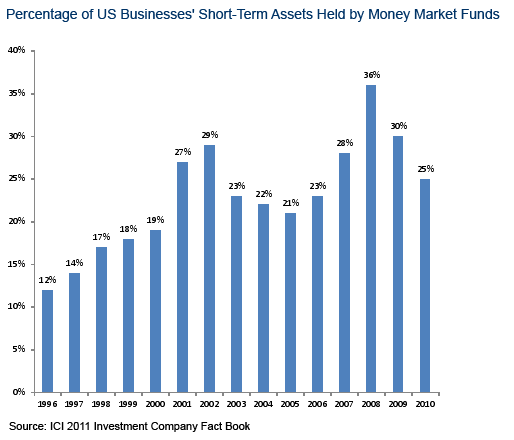Money Market Reform: The Uncertain Future of the Money Market Fund
Abstract
The SEC has already drastically reduced money market fund risk with its changes to Rule 2a-7 in 2010. The changes dramatically increased the liquidity of funds and took away most of the risks that funds faced in 2008. However, the SEC could be going too far by considering a floating NAV.
In response to the financial crisis of 2008, the SEC enacted a number of changes, included addressing liquidity by, among other things, shortening the weighted average maturity (WAM) of securities from 90 to 60 days and increasing the amount of cash and securities maturing in one day to 10%. So-called “second tier securities” were previously allowed to compose up to 5% of a fund's assets. This limit has now been lowered to 3%.
In a new report, Money Market Reform: The Uncertain Future of the Money Market Fund, Celent explores the new rules the SEC is still looking at, which include implementing a floating NAV, imposing capital cushion requirements, and restricting redemptions limitations by requiring a waiting period of 30 days to receive full funds.

“A floating NAV will negate the entire incentive that investors have to buy and sell these funds and ultimately eliminate the $2.7 trillion industry,” says Scott Sullivan, Senior Analyst at Celent and author of the report. “Healthy and vibrant markets are largely driven by positive economic activity; however, positive economic activity tends to occur only when there is certainty. The sheer number of proposed regulatory changes, combined with poorly defined timelines and the possibility of still more changes in the near future, could stifle economic progress and counteract earlier positive reforms.”
“Money market funds managed 25% of short-term assets for business in the US, down from a high of 36% in 2008. If the floating of these funds’ NAV were to disrupt this industry, the possible repercussions on investors and even our monetary system could be disastrous.”
In this report, Celent examines the future of the money market fund industry. As it stands now, the economics of running a money market fund are limited. Low rates have effectively eliminated fees, and new regulations would increase the cost of administering each fund. If all proposed rules by the SEC including a floating NAV are adopted, it will jeopardize a large piece of the monetary system, the effects of which no one can predict.

